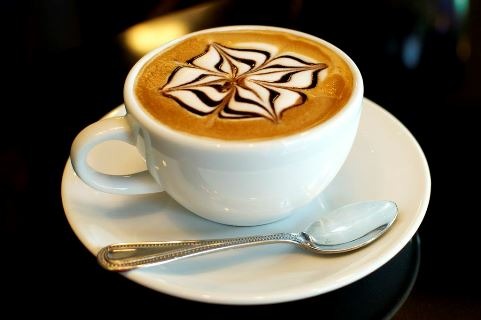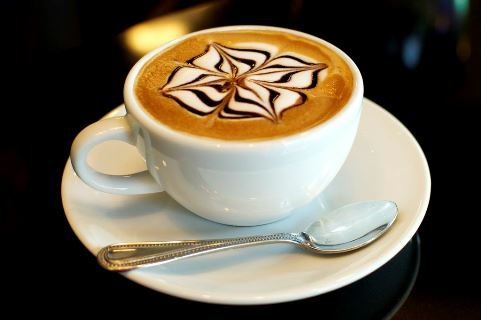Thailand Roast
No one knows much about Tan Cheng Long. Fleeing the civil war in his homeland, he stepped off a boat from China in the early 1950s armed with only the clothes on his back, and the knowledge of how to roast coffee — really, really good coffee.
In 1958 he rented a small one-story shop house from temple land belonging to the Jui Tui shrine, in the heart of what is now known as Phuket Old Town, and put up a sign that read "Hock Hoe Lee," meaning "Lucky."
From this humble wooden building, he began to roast Brazilian coffee beans imported via Penang. Soon, hordes of Chinese tin miners were beating a path to the shop on Ranong Road.
Although Thailand was a nation that revered tea as its national drink, coffee gave the laborers — most of whom worked long hours for little pay in terrible conditions — the buzz they needed to keep going.
Before too long, Cheng Long (who later on would take on a Thai surname, Tanpacharapisuit) was the king of Phuket coffee, his roasted beans — which he made every day to ensure quality — supplying restaurants and streetside vendors across the island. The sacks bore the simple yet proud stamp "A1" (there are actually three "A1": the best, good, and normal).
Business was good enough for him to enrol his eldest son, Somboon, in school in Penang (historically, Phuket's Chinese population would send their children to the then-colony for a British-style education, as well as to learn Hokkien and English).
When Somboon returned from Malaya, now a man, he joined his father in the hot, humid interior of the coffee roasting shop. Over time, he learned the intricate techniques and skills that would allow him to follow in the master's footsteps.
Like any son, however, he also had new ideas. One was to roast Thai coffee beans rather than the imports that his father had mostly used up until that point. The other was to rethink the traditional cha yen, or Thai iced tea, by instead using Ceylon tea leaves.
Grown in the island nation now called Sri Lanka, Ceylon black tea is famed for its golden color and intense flavor. It proved to be a master stroke, and in the 1980s made Hock Hoe Lee famous for tea as well as coffee.
Ruengrit "Oh" Petchvorakul is from a good Bangkok family, with a house on New Petchaburi Road, not far from Bangkok Hospital. Like many Thais of his generation, he was sent overseas for his final years of university, in his case studying electrical engineering at the University of Southern California in the city of Los Angeles.
While living in the States he had the realization that he could never be happy in the corporate environment that lay ahead. "It was not the life I was waiting for." It couldn't have been a more opportune time to meet Somboon's eldest daughter, Jutamas "Jaea" Tanpacharapisuit, who was studying on the same course in LA.
As they came to know each other, fall in love, and eventually marry, Oh came to learn about her family's historic business, roasting coffee to perfection on the southern Thai island of Phuket, a place about which he admits he knew very little at the time. "I'd never heard of Phuket before, I didn't even know where it was."
He remembers meeting his future father-in-law, recalling that that his first impressions of Somboon were of a man that was, "old-school in traditions, didn't think much of people from the big city, but was obsessed by coffee," says Oh.
"He can easily tell what kind of bean people will like. If it's old, if it's new, if it's properly processed. He knows how to play with the heat and fire when he roasts the beans."
"He will deliver coffee to any shop in Phuket, but when he comes back he will often complain that the retailer isn't using his roasted beans properly."
However, using his international experience — after his studies he had spent a year traveling across the U.S. — Oh knew change must come. "We had to open a café, otherwise no one would ever have the chance to taste our coffee," he said.
Everything had to be created from scratch, from the logo — the sign on the original shop in the Old Town simply reads Hock Hoe Lee, in Thai, Chinese, and English scripts — to the colors and the packaging.
Inspiration came from the muted designs and neutral palettes of coffee shops in the American cities of New York and Seattle, though noticeably not the latter city's most famous export.
In its first year of operation, the Hock Hoe Lee café has built up a strong, loyal following of coffee aficionados (patron Jana McGeachy declares it "The best coffee in Phuket," while the TripAdvisor ratings average "Excellent"). With an admirable pursuit of excellence that his father-in-law must surely be proud of, Oh says that "If I cannot do it well, I won't do it at all."
So what exactly does his coffee-obsessed father-in-law think about the endeavor? After some thought, Oh says, "It's like a whole new world to him."
On the whole, though, it seems Somboon is content to let the next generation find a new future for Hock Hoe Lee. Being rich or famous doesn't concern him — what drives the older man on is the determination to produce the best roasted coffee in Phuket.
After all, apart from his son-in-law and eldest daughter, no one else alive knows the secret roasting processes that were passed down to him by his father — the poor man from China who arrived with nothing but knowledge and a handful of beans.
Hock Hoe Lee, 28/9 Moo 5, Viset Road, Rawai, Phuket, Thailand. +66 76 381 975. hockhoelee.com, facebook.com/HockHoeLee
Simon Ostheimer is a Phuket-based travel writer. To see more of his work, visit www.simonostheimer.com
Photos by Kiri Heald

